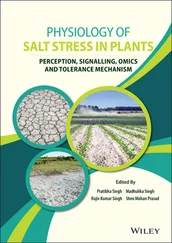Harry Ward - Disease in Plants
Здесь есть возможность читать онлайн «Harry Ward - Disease in Plants» — ознакомительный отрывок электронной книги совершенно бесплатно, а после прочтения отрывка купить полную версию. В некоторых случаях можно слушать аудио, скачать через торрент в формате fb2 и присутствует краткое содержание. Жанр: foreign_prose, Биология, Биология, foreign_edu, foreign_antique, на английском языке. Описание произведения, (предисловие) а так же отзывы посетителей доступны на портале библиотеки ЛибКат.
- Название:Disease in Plants
- Автор:
- Жанр:
- Год:неизвестен
- ISBN:нет данных
- Рейтинг книги:5 / 5. Голосов: 1
-
Избранное:Добавить в избранное
- Отзывы:
-
Ваша оценка:
- 100
- 1
- 2
- 3
- 4
- 5
Disease in Plants: краткое содержание, описание и аннотация
Предлагаем к чтению аннотацию, описание, краткое содержание или предисловие (зависит от того, что написал сам автор книги «Disease in Plants»). Если вы не нашли необходимую информацию о книге — напишите в комментариях, мы постараемся отыскать её.
Disease in Plants — читать онлайн ознакомительный отрывок
Ниже представлен текст книги, разбитый по страницам. Система сохранения места последней прочитанной страницы, позволяет с удобством читать онлайн бесплатно книгу «Disease in Plants», без необходимости каждый раз заново искать на чём Вы остановились. Поставьте закладку, и сможете в любой момент перейти на страницу, на которой закончили чтение.
Интервал:
Закладка:
Returning to our hypothetical starch-grain—or, rather, its parts—we have some of it retained as starch, in excess, simply because it is not needed at the moment: another portion gives up its energy in respiration, and this does work on the spot, or is lost as heat; or in the body of an organic acid, or its salt, the part in question may do lifting or pressing work by osmosis, or cause diffusion-currents from one cell to another. In the constitution of the cell-wall we may have part of our starch-grain aiding in imbibition or in the establishment of elastic tensions in turgidity: and, finally, parts may be built up into the living protoplasmic machinery of the plant.
What is true for the starch-grain is also true for any particle of salt, or water, or gas which enters into the metabolism of the living plant, regard being paid to the particular case, and circumstances in each case.
Enough has been said to show that the plant cannot be properly studied merely as the subject of chemical analysis or of physical investigation; you might as well expect to understand a watch by assays of the gold, silver, steel and diamonds of which its parts are made up, or to learn what can be got out of the proper working of a lace machine by analysing the silk put into it, and the fabric which comes out, and by taking the specific gravity of its parts and testing the physical properties of its wheels and levers.
This is not the same thing as denying the value of such knowledge, in the case of either the dead machine or the living plant: it is merely emphasising the supreme importance of the study of the structure and working of the active machinery in both cases.
Nor is it pertinent to remark on the apparent hopelessness of physiology being at present able to explain the seemingly infinite complexity of the living machinery of protoplasm and its activities. The modern locomotive is also a complex affair in its way, but it is profitable to investigate it and to know all one can of its working and possibilities, for obvious reasons: a little reflection will convince us that it is also worth while to investigate that complex machine, the plant—the working organism which alone can really enrich a country. Moreover, we ought to be encouraged by the satisfactory progress now being made, and the splendid practical results which are accruing, rather than dismayed by the prospect of unflagging labour which will be required in the future.
Enough has perhaps been said to establish the general truth that the plant is a complex machine for storing energy and material from outside, and we have seen that modern research has at least gone a long way towards determining how the living machine works.
It is hardly necessary to point out that important practical consequences may result from these phenomena of the accumulation of surplus starch or other carbohydrates in the leaves during the day, and of their disappearance during the night into the lower parts of the plant. For instance, foliage cut for fodder in the morning is far poorer in starch than if cut in the evening, and it would be very instructive to have experiments made on a large scale to test the result of feeding caterpillars or rabbits, for instance, with mulberry, vine, or other leaves in the two conditions.
Again, we now see what complications may arise if a parasitic organism gains access to the stores of carbohydrates in process of accumulation, or attacks and injures the machinery which is building up such materials, etc.
Notes to Chapter IV
The student who desires to pursue this subject further should read Sachs' Lectures , XX. and XXV., and Pfeffer's Physiology , pp. 442-566, but he will hardly arrive at the best that has been done without consulting Pfeffer's "Studien zur Energetik der Pflanzen" in the Abhandl. der Math.-Phys. Classe der Kgl. Sachss. Gesellsch. der Wiss. (Leipzig, 1892), p. 151; and Kassowitz, Allgemeine Biologie (Vienna, 1899), Bk. I., pp. 1-127.
CHAPTER V.
ROOTS AND ROOT-HAIRS
Older views as to root-hairs—Root-hairs and their development—Surface—Variations—Conditions for maximum formation—Minute structure—Adhesion to particles of soil—Functions.
On the roots of most plants are to be found delicate, silky-looking, tubular prolongations of some of the superficial cells, known as root-hairs. Malpighi (1687) seems to have been the first to observe them, and he took them for capillary tubes. Grew (1682) seems to have been responsible for the view that the roots act like sponges in taking up water.
Simon (1768) was probably the originator of the idea that these root-hairs were excretory tubules, a view that became very popular at the beginning of this century.
Meyer (1838) was perhaps the first to give a comparative account of them, and he supposed them to be delicate prolongations of the root-surface to facilitate the absorption of water.
The real importance of these organs, however, has only become apparent since Sachs, in 1859, recognised their relations to the particles of soil between which they extend and to which they cling.
In 1883 Schwarz made a very thorough study of their biological character, and in 1887 Molisch gave us new facts as to their physiology. Our knowledge of them has been rendered very much more intimate by the researches of Pfeffer and De Vries on osmotic and plasmolytic phenomena, and they serve as an excellent study of some of the best results of modern physiology.
In the normal case, such as is exemplified by a seedling wheat or bean, the root-hairs arise some distance behind the growing tip of the root, an obvious adaptation which prevents their being rubbed off by the soil, as they would be if developed on parts still actively lengthening. As those behind die off, new ones replace them in front, and so we find a wave of succession of functionally active root-hairs some little distance behind the tip of the root: the same order of events holds for each new rootlet as it emerges from the parent root, and so successive borings in the soil, made by the diverging root-tips, are thoroughly explored by these root-hairs.
Measurements have shown that in various plants the surface of root on 1 mm. of length is increased by the root-hairs in proportions given in the following table:

—which sufficiently establishes the general proposition that the area of the root-surface is enormously increased by these hairs.
But this does not give us any definite idea of the length of the cylinders of soil explored by these surfaces, until we find that plants such as an ordinary sunflower, hemp, or vegetable-marrow may have roots penetrating into a cubic meter of soil, in all directions, and so closely that probably no volume so large as a cubic centimeter is left unexplored. Clark found by actual measurement that the roots of a large gourd, if put end to end, extended over 25 kilometers, and Nobbe gives 520 meters for the roots of a wheat. Vetches may go nine feet deep, and oats more than three feet. The Sal, a tree of the forests of India, has roots which penetrate to a depth of 50 to 60 feet.
Some rough notion of the lengths, superficies and penetrating capacities of the roots of a large tree may be gathered from the above, but it is doubtful whether we can form any adequate ideas as to the millions of root-hairs which must be developed along the course of these subterranean boring organs.
One of the most striking results of modern enquiry into these matters, is the discovery that the number and superficial area of these root-hairs, on one and the same plant, may vary to a large extent according to the structure, as it were, of the soil, and the degree of moisture it is capable of retaining; or, with the same soil, according to the amount of water which it receives and holds. Correlations have also been observed between the development in length and surface of the rootlets themselves.
Читать дальшеИнтервал:
Закладка:
Похожие книги на «Disease in Plants»
Представляем Вашему вниманию похожие книги на «Disease in Plants» списком для выбора. Мы отобрали схожую по названию и смыслу литературу в надежде предоставить читателям больше вариантов отыскать новые, интересные, ещё непрочитанные произведения.
Обсуждение, отзывы о книге «Disease in Plants» и просто собственные мнения читателей. Оставьте ваши комментарии, напишите, что Вы думаете о произведении, его смысле или главных героях. Укажите что конкретно понравилось, а что нет, и почему Вы так считаете.












